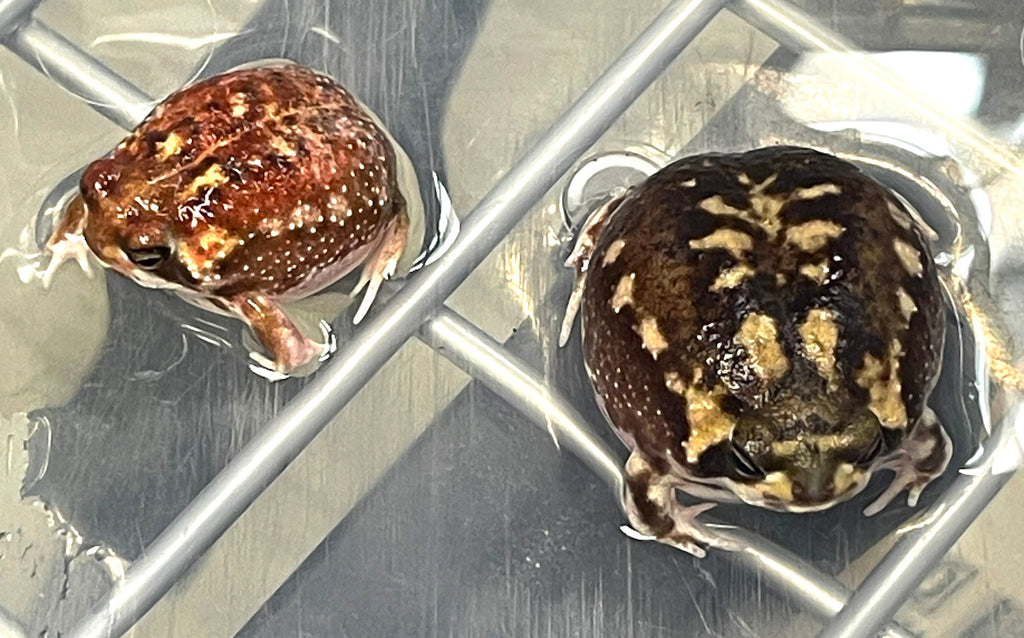Locate Your Perfect Rain Frog for Sale: Dive into the Globe of Exotic Amphibians!
Locate Your Perfect Rain Frog for Sale: Dive into the Globe of Exotic Amphibians!
Blog Article
The Best Reptile Enclosures: Exactly How to Produce the Ideal Environment
Developing the ideal environment for reptiles is not simply concerning placing them in a tank or room; it involves a thoughtful factor to consider of numerous variables that contribute to their general health. From the size of the enclosure to the kind of substratum used, every aspect plays a vital role in supplying an environment where your reptile can grow. By recognizing the specific requirements of your reptile species and executing the ideal environment configuration, you can guarantee their wellness and joy in captivity.
Picking the Right Room Size
When picking an unit dimension for reptiles, it is vital to consider their natural actions and space requirements to ensure their wellness and wellness. When it comes to environment space, various reptile types have varying needs. Arboreal varieties like chameleons or tree snakes require vertical space for climbing up and setting down, while terrestrial species such as bearded dragons or leopard geckos need even more floor space for checking out and thermoregulation. Aquatic turtles like red-eared sliders require rooms with both water and land locations for swimming and basking.
A basic policy of thumb is to offer sufficient area for the reptile to display natural behaviors, such as basking, hiding, climbing up, and foraging. By carefully taking into consideration the specific demands of the reptile species in question, proprietors can create an ideal and improving habitat that advertises overall well-being and motivates all-natural habits.
Setting Up Appropriate Burner
To ensure the health and health and wellness of reptiles in their rooms, it is important to thoroughly establish correct heating components. Reptiles are ectothermic creatures, suggesting they rely upon exterior warm sources to manage their body temperature level. When establishing heating elements in a reptile room, it is essential to think about the particular temperature level needs of the species you are taking care of. Different reptiles have varying temperature level requires based upon their natural habitat, so it is essential to study and understand these requirements.
One typical and efficient burner for reptile enclosures is a heat lamp or ceramic warm emitter. These heat resources can be made use of to create a temperature gradient within the room, enabling reptiles to relocate in between warmer and cooler areas as needed. Furthermore, under-tank hot pad or warmth mats can be used to provide stomach warm, which is specifically useful for reptiles that call for added warmth to assist in digestion.
Monitoring the temperature within the room making use of a thermometer is necessary to ensure that the burner are keeping the appropriate temperature range for your reptile. On a regular basis examine and change the heating elements as needed to develop a comfortable and healthy atmosphere for your flaky good friend.
Choosing Appropriate Lights Fixtures

Providing the Perfect Substratum
Picking the suitable substratum is necessary for producing a ideal and comfy environment for reptiles in their enclosures. The substrate offers various purposes, consisting of giving a foundation for all-natural behaviors like tunneling, assisting in maintaining proper moisture levels, and providing a comfy surface for the reptile to rest upon - rain frog for sale. When choosing a substratum for your reptile room, it is crucial to think about the species-specific demands of your learn this here now animal. Some reptiles, such as desert-dwelling varieties like bearded dragons, thrive on substratums like calcium sand or reptile rug, while others, like ball pythons, choose coconut husk or aspen bedding to maintain humidity levels.
Prevent substratums that can trigger impaction, such as loosened substrates like sand or crushed rock, particularly for reptiles recognized to consume their bed linens. Frequently cleaning and changing the substrate is important to guarantee a tidy and sanitary environment for your reptile.
Decorating for Enrichment and Convenience
Thinking about the substratum's function in supplying a structure for all-natural behaviors and preserving a suitable environment, improving the reptile unit with proper designs is critical for both enrichment and comfort. When decorating the room, it is important to take into consideration the reptile's species-specific demands and behaviors to produce an area that advertises physical and mental well-being. By incorporating a selection of designs that imitate the reptile's all-natural environment, owners can guarantee their family pet's comfort and boost their natural reactions, ultimately leading to a happier and much healthier reptile.
Conclusion

Creating the ideal habitat for reptiles is not simply about putting them in a container or unit; it involves a thoughtful factor to consider of various elements that contribute to their general well-being.Picking the ideal substrate is vital for creating a appropriate and comfortable atmosphere for reptiles in their enclosures. Some reptiles, such as desert-dwelling varieties like bearded dragons, grow on substrates like calcium sand or reptile carpeting, while others, like round pythons, like coconut husk or aspen bed linens to preserve humidity degrees.
By including a selection of decorations that site resemble the reptile's natural habitat, proprietors can ensure their family pet's comfort and promote their all-natural impulses, eventually leading to a better and healthier reptile.
In final thought, producing the perfect habitat for reptiles entails choosing the suitable room dimension, heating elements, lighting fixtures, substrate, and decors.
Report this page